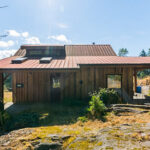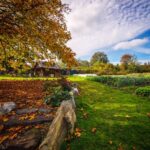How’s the Salt Spring Island Real Estate Market?
Things are definitely “better”, real estate wise, in secondary home regions. They are still not “good”. Good, to me, means consistent buoyancy in sales, across the board, no matter the property type or price.
To me, a buyers market means lots of inventory and few buyers. A sellers market is the reverse: lots of buyers and very little inventory. A transition market is a cloudy one.
At this very beginning of September 2014…
At the moment, at this very beginning of September, most sales have continued in that entry-level residential category. Sales volume in same is definitely up, possibly doubled over 2013 stats, and the ceiling in price is rising…two years ago, most sales were below 400,000…this year, under 600,000. Consistent sales, then, in that entry level residential segment, with increasingly higher prices (possibly as a result of thinning inventory), are good signs. Authentic recoveries do begin in this property/price category.
I look at undeveloped land sales as the key marker of sales activity strength, in a secondary home/discretionary marketplace. It is still quiet in raw land sales.
In a downturn, investor-buyers seek rentable entry level residential opportunities. Such buyers are not necessarily end-users of the properties they buy.
As prices soften dramatically, during a real estate downturn, occasional upper tier priced properties sell…a buyer recognizes the moment of a “good deal”. These are random encounters, though, and not a market pattern.
What’s been missing over the past 5 to 6 years?
What has been missing throughout the past five to six years of flat conditions, in secondary home markets, is what I call the middle person.
Perhaps this is why that middle priced buyer segment (on Salt Spring, this would fall between 700,000 and 1.3 million…which is a pretty wide spread, but which does encompass properties that someone would move into and so might be choosing to live here), a middle range in type and price, and that buyer profile is still missing.
Another flat segment is the purely recreational…a summer/weekender property, a cottage-style dwelling. Perhaps that’s another indicator of the missing middle person buyer. To live elsewhere and to choose a recreational second home purchase does require a level of confidence in the economy.
Undeveloped land sales remain very flat. The buyer in a recreational area right now is not seeking a holding property and is not planning a building project. There are some very well priced and beautifully presented excellent land parcels available…and in all price ranges. In a positive real estate sales environment, we would be seeing strong purchases in this property segment.
The uptick in the entry level residential category is driving real estate sales in all secondary home/retirement/recreational areas…the bulk of sales on Salt Spring Island have continued to be in this segment.
It seems that our main Gulf Islands sales window has now become a summer/fall market. People inquire throughout the year, but physicality to view has shortened to summer/early fall. Interesting. An outcome of our post-Internet world?
The main difference delivered by that global search engine eye: it gives a buyer enormous choice about the “where” of a purchase decision.
Marketing matters
Areas, including on Salt Spring, are in competition with many other global regions…not just with our immediate neighbours on other Gulf Islands or on Vancouver Island. Hmmm…. Marketing, marketing…how to catch that buyer eye?
On Salt Spring, we are undergoing a “print war”…and in a digital age. The monthly real estate supplement, printed by our weekly newspaper, had gone to seven issues a year. Realtors had complained about expense and fact that listings did not change much in the downturn years. When same realtors asked to go to four (maybe five) issues a year, the local newspaper refused. Thus, a new supplement (four issues a year), in competition with the newspaper’s version (seven issues) was created. They have different distribution venues. Thus, if in business, it’s important (locally) to be in both. The reason behind the newer publication, though, is key: less print issues because realtors perceive business as still slow. In a brisk market, a quarterly supplement would be useless.
So…as we enter into very early September, with a good three months of our sales window still before us, we look for more activity in that “middle territory”, in undeveloped land opportunities, and in upper tier priced residential choices…those are the property segments that show a market resurgence.
Right this moment, we are still firmly in a transition period, where everything is there all at the same time. Up, down, yes, no…a market in transition is not a clearly observable market.
There are many things floating about us, globally. Small wars in many places, continuing economic issues in Euro countries, worry about sluggish recoveries in key countries (read U.S.)…no one is immune from such global concerns and insecurity creates hesitation in a real estate recovery, in a secondary home marketplace. That means on Salt Spring, too. One chooses to buy on Salt Spring Island, on another Gulf Island, on Vancouver Island. No one “has to” purchase in a secondary home/discretionary area.
So…the transition market is still with us. Most sales are still in that entry level residential category.
Renewed interest in safe haven investing might bring sales in all categories, in our slightly “apart” region.
A later sales window means we still need to see the statistics for all of September/October/early November before making a definitive call on 2014’s sales pattern.
So…it is “better”…it’s not yet “good”.
Markets, whether up or down, have beginnings/middles/ends. I do think we are at the end of a six year downturn. That means transition market patterns, in the short-term.
Difficult to clearly read the tea leaves of change. It may be that those projecting buoyant conditions by early Spring 2015 will be correct. Perhaps 2014 will be looked back at as the muddled recovery year. Hmmm…. Where is that crystal ball? Let’s hold that “better” scenario for now.









